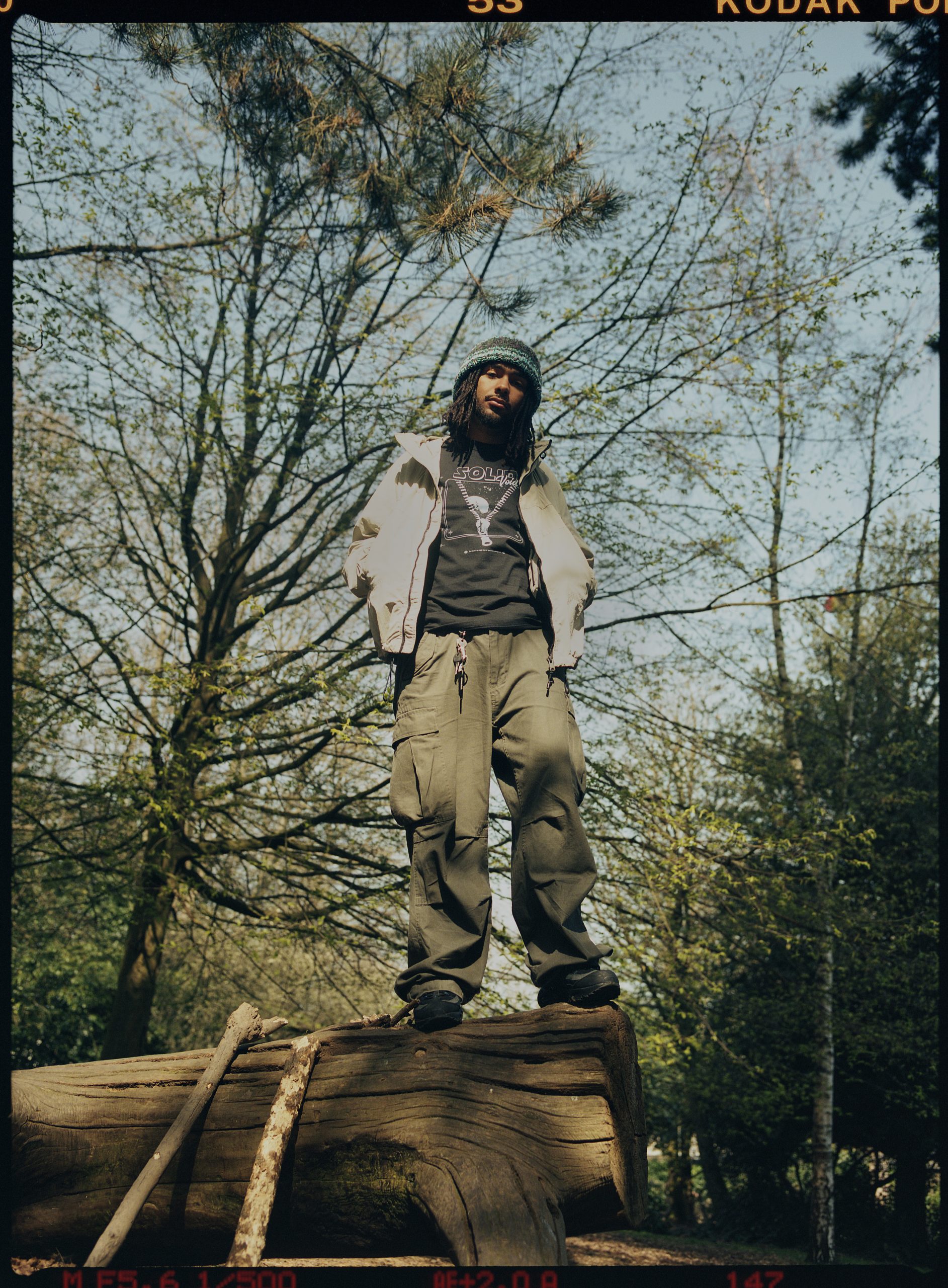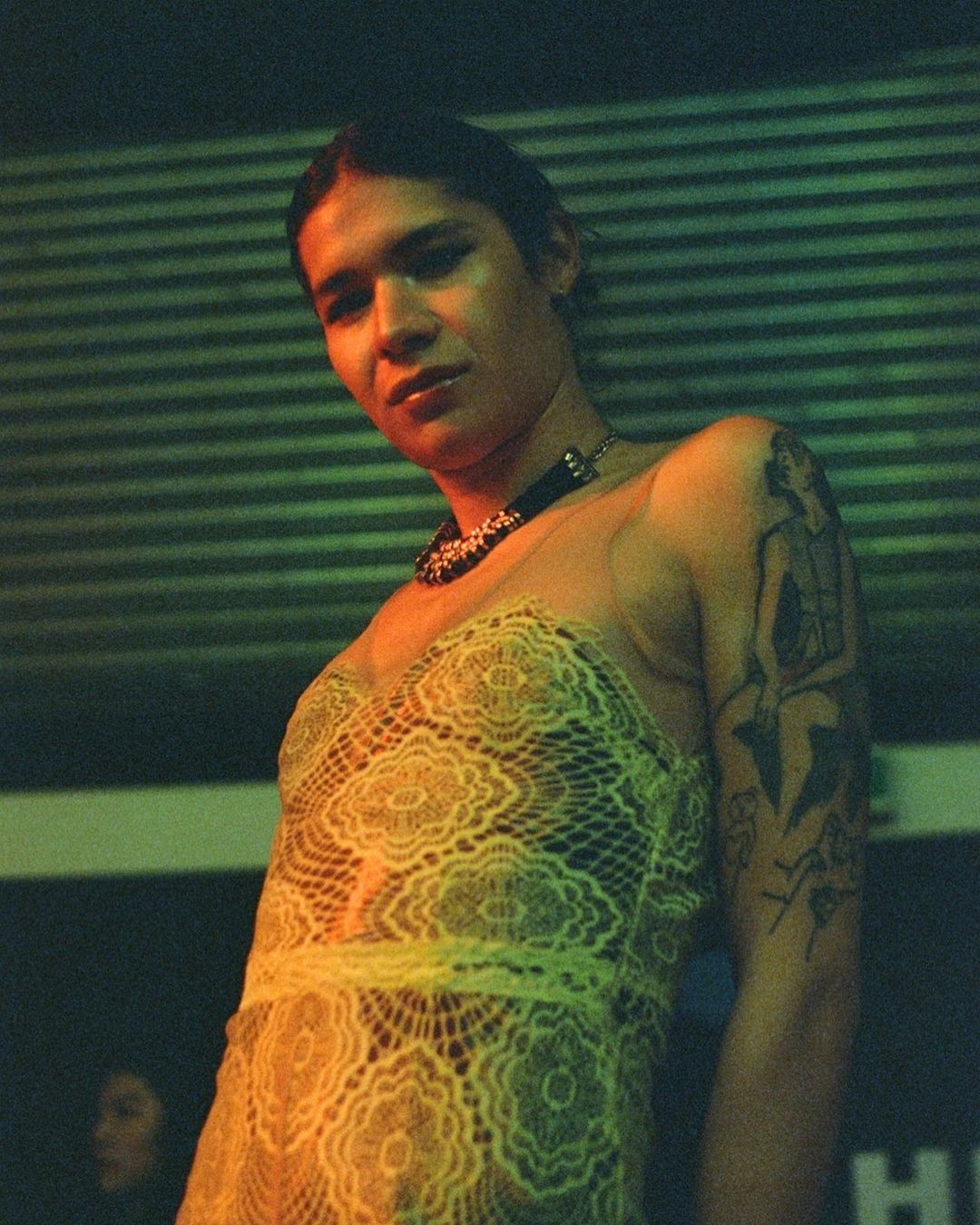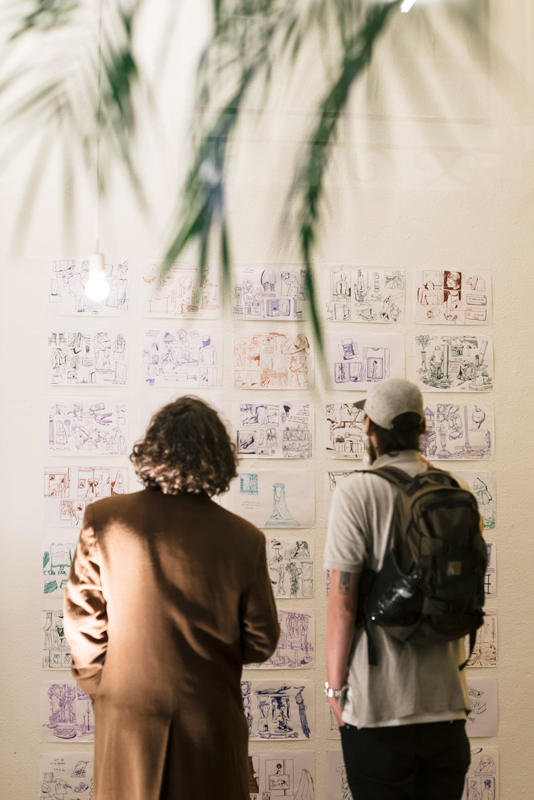Is one of the UK’s pertinent displacement issues – post-Brexit, post-pandemic, in percolating Tory Britain – still the brain drain to London? Belfast makes for an interesting case study. Northern Ireland’s young people have long absconded elsewhere – whether that’s because of limited university places, job opportunities, or post-conflict political turmoil. Local think tank Pivotal found that between 2018 and 2019, two-thirds of NI students didn’t return after graduating. Still, the pandemic and cost of living crisis has accelerated a boomerang effect on young people staying or returning home across the UK, and it’s worth considering what the ongoing scattering and regrouping means for the future of creative communities.
Is one of the UK’s pertinent displacement issues still the brain drain to London?
“There are quite unique barriers to growing creative hubs in Belfast, because of how Northern Ireland is set up,” says Hall. “The creative landscape is impacted by the government and history. The hustle of being an artist, promoter or a producer is particularly intense here. Even access to sound systems and the overheads are sky high here compared to other cities, because materials are so scarce and we’re small. That’s before even selling a ticket to an event to a club night.”
Banana Block hopes to add to East Belfast’s cultural heritage. The space has been supported by a Tourism Northern Ireland development grant, though doesn’t hold charitable status, making raising funds difficult. Though not unique to Belfast, funding and progressive policy are the bane of the region’s creative communities. The night time economy is underfunded and under threat. Free The Night NI is fighting to change restrictive local licensing laws, which are some of the most archaic in Europe. The group is calling for post-Covid recovery plans, and protections for existing venues and nightclubs as places of cultural significance, like measures which already exist in Amsterdam and Berlin.
In 2015, after spending time in New York to research the queer ballroom scene, Hall brought a live performance called HOUSE to the MAC Belfast, and facilitated a cultural exchange with artists. “I am actually a big advocate for leaving here [Belfast],” she says. “I came back from New York with so many thoughts and intent to implement them here. It’s rare here to have a singular artistic focus and longevity is difficult for exploring and expanding yourself. You want to pay your mortgage, while you also want to stay true to a creative practice. I find it hard to think of anyone who doesn’t have a non creative day job or side hustle. It’s tough.”
“But I feel positive, you know?” she continues. “I’ve realised you can do so much with so little, and sometimes that has even more potency. We can always create places that bring artists together. We take risks – we’re scrappier here! We’ve more space to explore things outside of the creative norms, more opportunity to defy expectations of a wee place.”
We’ve more space to explore things outside of the creative norms
Unlike most major European countries, the UK’s cultural, social, and political frameworks are built around the capital. The magnetic pull for creatives to London is clear, thanks to regional imbalances on everything from arts funding to the location of cultural institutions. There have been moves to offset this – earlier this year, a government plan to allocate £75 million in cultural funding to communities outside of London was announced. The plan includes an £8 million pot incentive for organisations to relocate or expand outside of the city.
Creativity can easily be co-opted by capitalism. In London, as in most Western capital cities, since the ‘70s one of the most acute manifestations of this has been waves of gentrification. Whether it’s Peckham or Hackney (or even once upon a time, pockets of West London), the script for this tends to go something like: artists and creatives (from typically white, suburban backgrounds) begin living and working in a ‘deprived’ area, attracted by cheap rents and studio spaces. They open cafes, art spaces, and bars, creating a buzz that attracts a more monied, typically more corporate class. This popularity in turn starts to push rents and house prices up, as landlords seek to benefit from the new demand. The gentrification process can happen gradually, or at lightspeed, in a matter of a few years, but the result is usually the same: long-term residents become victims of an area’s ‘success’, priced out of a place they’ve always called home.
Long-term residents become victims of an area’s ‘success’
“There’s been such a widespread culturalization and aestheticization of urban lifestyles that artists no longer have to show the middle and upper-class gentrifiers how to live,” sociologist Sharon Zukin notes. Yet the idea of the artist-as-gentrifier still holds weight, even if it’s is a trope that doesn’t reflect the nuance of gentrification. Art influences gentrification, and gentrification influences art – what art we value, who can be an artist, who has access to art institutions. London’s born and bred cultures – namely, Black communities – have historically been physically policed and censored, from the grime of Tower Hamlets to the drill of Brixton, while concurrently, commercial creative hubs proliferate. Capitalism co-opts what it can imitate and sanitise – here, it’s marginalised people’s culture.
Artists can reckon with and participate in the fight against gentrification. In 2017, community organisers in Los Angeles developed, An Artists’ Guide to Not Being Complicit with Gentrification, that touches on housing activism, education, and restorative justice. Gentrification is a process born out of capitalism, and romanticising and bolstering a creative capital megacentre is at the detriment of both London-born and London-new artists.
In 2017, Somerset House’s North: Fashioning Identity exhibition celebrated the multiplicity of northern England’s fashion, photography, music and film, and how it sculpts what we understand as British style, attitude, and social stratum today. A slow-growing recognition of the impact of long-rooted histories across the isles continues.
Artists can reckon with and participate in the fight against gentrification
“There’s so much history and tradition in Wales in terms of textiles and clothing, as well as a really fun cultural legacy to take inspiration from,” says fashion designer Rosie Evans, whose Welsh heritage shines through in her ‘high fantasy’ brand, which uses secondhand textiles and vintage fabrics in genderless corsets and garments. Plastic fruit packaging collected from the Cardiff food market is used in some of her corset boning, and kilts give a historical dimension to contemporary pieces. Her work hopscotches from tradition to future-thinking. “I think coming from somewhere with such a rich cultural history never leaves you, I’m never going to stop being Welsh no matter where I am. Being able to connect with other Welsh creatives outside of Wales is really important too, we always find each other, like a Welsh network.”
Evans moved from South Wales to Brighton, where her studio is now based, and is part of sustainable fashion collective Artwear. “I’ve found Brighton has really helped my creative practice and my brand, there’s a big sustainable fashion scene in Brighton,” she says. “There’s a sense of community I don’t know if I’d find in other parts of England. I think it helps that it’s a smaller city. I chose to move to Brighton because of its closeness to London, but I honestly don’t go up as much as I thought I would, I think because I’ve found such a great community.” Fashion East grads James Theseus Buck and Luke Brooks’s label, Rottingdean Bazaar, has stamped the London fashion industry with their surrealist vision, all from their base in the East Sussex village Rottingdean. “How can creatives succeed in a city that drains every last penny out of you, unless you already grew up there, or are well off enough that it’s not an issue?” she says.
Media coverage of creative scenes continues to grow holistically, from Boiler Room’s documentaries on hyper localised genres like North East England’s Makina, to thriving regional independent media – Belfast-based Tangerine is a literary magazine that champions the works of burgeoning authors from Susannah Dickey to Padraig Regan, and LAW Magazine’s patchwork banner collaboration with Sadie Williams featured patches from contributors inspired by their hometown folklore across the British Isles.
Bristol was our hometown and it offered something unique to us to grow
“We didn’t set out to deliberately start a creative business outside of London, but Bristol was our hometown and it offered something unique to us to grow,” says Jake Applebee, the co-founder of CRACK. The 13-year-old magazine is free to pick up and is distributed across Europe, with offices in Bristol, London and Berlin. “The creative community was inclusive and supportive [in Bristol], and it felt you could quite quickly make an impact and find purpose. Our voice as a result had a different perspective that sat outside of the majority of our industry peers which helped form our identity in the beginning.” It remains pretty radical to see a creative platform that – while championing the music, culture, and surrounding communities of the UK’s capital city – resists defaulting to London.
“Technology has enabled anyone to have a global voice now, the barriers associated with location are diminishing,” says Applebee. In the last few months, CRACK has run events in Amsterdam, Berlin, Milan, London, and Bristol, and is involved in the curation of Bristol’s Simple Things Festival. “We have staff working across Berlin, Barcelona, London, and Bristol so our working practice has evolved quite a bit. But face to face collaboration and contact are still essential in forming lasting relationships, so you have to make sure that still forms a strong part of your working practice.”
“I’ve seen Manchester as a city put more and more money into culture and building infrastructure to support creative communities,” says Kemi Alemoru, the Manchester-born, London-based culture editor of gal-dem and a freelance culture journalist for The Guardian, GQ, and other titles. Over the years, Alemoru has hosted events and curated programming at Manchester International Festival and London’s Soho House. Her home city will see the opening of The Factory later in 2022, a huge exhibition space funded by the city council and government.
The Factory will provide apprenticeships and a major training centre for local people seeking to work across the creative industries. Over the next five years it is expected to create up to 1,400 fully funded skills and training places, providing an entry point to work in the creative industries.
Turning heads in London can feel easier than Leeds
“Turning heads in London can feel easier than Leeds,” Alemoru says. “Gal-dem is all about the people you don’t hear much from. I think about the diasporas, regional voices. Often, when I’m commissioning a story I have to think about those layers of identity. If it’s Black History Month, where are those voices from outside of London and what are they saying differently, what’s their experience?”
“Labour’s arts manifesto was so important,” she says. “They offered clarity on funding local arts. One city can’t be the epicentre of money, arts, creative jobs. We need to have the same access to exhibitions, cutting edge technology and opportunities to grow and tell our stories, in our areas. I’m not really up for always performing being Northern.”
The Talent House, a thriving new creative hub located in Stratford, East London, opened last month. A collaboration between UD and East London Dance, it is a space and resource for young people with dance studios, rehearsal, education and events spaces.
“Over the last 20 years, UD has seen the potential for excellence in every young person we’ve encountered,” says Pamela McCormick, UD’s founder and CEO. “We’ve witnessed first-hand that talent is everywhere, but opportunity is not, and so we are proud to have worked with and supported the journeys and careers of thousands of young people, many of whom are from east London.” UD’s work has meant nurturing artists like Little Simz.
The need for a ‘think local, act global’ approach
“We are unique to east London, but we work alongside many cultural hubs across the UK, all with the single ambition of raising the aspirations of young people regardless of where they live and what their background is. We believe that cultural hubs – many of which have been part of cultural and economic regeneration projects – have the potential to transform societies, connect and strengthen local communities, and provide quality opportunities through creativity for young people.”
One common thread that ran through all the very different conversations I had for this article was the need for a ‘think local, act global’ approach. This is how we create diverse, accessible creative communities, that acknowledge and engage with their locality, how it’s limited and liberated. Right now, we’re at an exciting intersection for opening up the creative industries regardless of physical location, and for the celebration of all layers of creative identity. The enduring spirit of organisations like NTS and collectives like No Signal are testament to that – calling in global diasporas while celebrating their home turf. And as Belfast’s Banana Block affirms, peeling back the layers to meet surprising enclaves for original, creative work is always sweet.
Read More: Ortigia Sound System: A Family Affair






